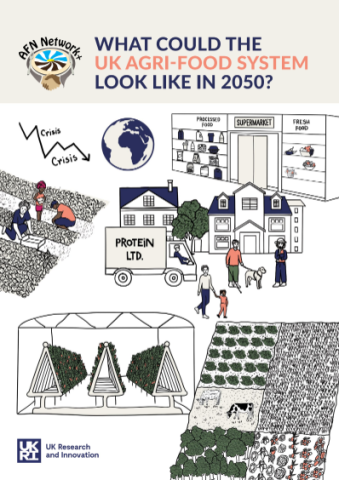It then summarises what policy planning and research will be needed under each of these futures, to move the agri-food system towards a net zero UK.
Download the paper below.

This paper describes four scenarios for how the world might be in 2050 and what sort of agri-food systems may exist within them.
It then summarises what policy planning and research will be needed under each of these futures, to move the agri-food system towards a net zero UK.
Download the paper below.
In 2015, the UK pledged to be Net Zero by 2050, with the NFU striving for the more ambitious target of 2040. Net Zero is achieved when the amount of greenhouse gases (GHG) emitted is balanced with those removed from the atmosphere. This helps to combat climate change and reduce global warming.
Climate change threatens our ability to ensure global food security, eradicate poverty and achieve sustainable development. In 2016, 31 percent of global emissions originating from human activity came from agrifood systems.
The key GHGs for agriculture that contribute directly to climate change are: Carbon dioxide (CO2) Methane (CH4) Nitrous oxide (N2O) All these GHGs are often grouped under the umbrella term ‘carbon’.